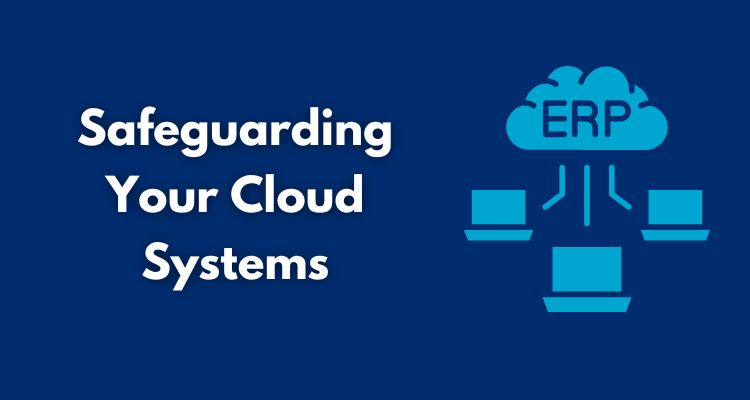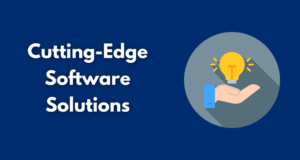Remote ERP access is no longer a luxury. It’s the bloodstream of modern companies—especially those relying on cloud systems to keep operations running across cities, countries, or continents.
Yet, with every open digital door comes a shadow: risk. Cloud system security isn’t just about firewalls and passwords; it’s about discipline, layers, and an understanding that attackers work 24/7, while your systems might not.

Table of Contents
ToggleUnderstanding the Risk Landscape
Cyberattacks targeting ERP platforms have been growing at an alarming pace. A 2024 report noted that over 64% of cloud-based ERP breaches stemmed from compromised credentials or poorly configured remote access. These systems store financial records, customer data, and sensitive business intelligence—exactly the kind of treasure attackers dream of.
The danger doesn’t only come from outside forces. Human error—clicking a wrong link, using “password123,” or skipping updates—creates just as many problems. When remote access is in the mix, the challenge doubles: you can’t control where employees connect from, and you can’t always control the networks they use.
First Line of Defense: Controlled Access
Role-based access control (RBAC) isn’t just a buzzword—it’s your gatekeeper. Employees should only see and interact with the modules they need. No more, no less. If a finance assistant doesn’t need warehouse stock data, don’t give them that view.
Quick Security Tip: When users log in from public networks, advise them to connect through a secure tunneling service. This reduces the risk of interception and keeps data streams unreadable to outsiders, even on unsafe Wi-Fi.
Encryption—For Data in Motion and at Rest
Encryption is the invisible lock that keeps data from turning into a free buffet for hackers. When you send a purchase order, when an invoice is uploaded, or when payroll data moves through the cloud, it must travel in encrypted form.
In addition to encrypting the cloud system itself, it makes sense to use a VPN for Mac. Why? Simply put, VPN apps, including VeePN VPN, offer always-on encryption. Wherever you connect, encryption will be active all the time, and will not depend on the web service you connect to.
Data “at rest”—stored in your cloud provider’s servers—should also be encrypted. If an attacker somehow gets in, they should still be staring at unreadable, scrambled text. This way, the breach might occur, but the data remains useless. Pairing encryption with enterprise-grade backup solutions ensures that even if systems are compromised, organizations can securely recover critical data without disruption.
Multi-Factor Authentication (MFA): The Unskippable Step
Here’s the math: a password alone can be stolen in minutes. Adding a second layer, like a mobile authentication code or biometric scan, turns that minutes-long task into a nightmare for attackers. MFA adoption among businesses grew by 27% last year for a reason—it works.
If your ERP platform offers adaptive authentication (triggering extra checks when logins happen from unfamiliar devices or locations), turn it on. Think of it as a guard who asks extra questions when something feels “off.”
Network Hygiene and Ongoing Monitoring
Your ERP isn’t an isolated island—it’s connected to many systems, apps, and devices. That’s why network hygiene matters. Remove old user accounts, audit permissions regularly, use VeePN VPN and monitor unusual activity. An employee who never downloads reports suddenly exporting thousands of records? That’s not normal.
Modern ERP security monitoring can even use AI-based anomaly detection, flagging suspicious patterns before damage happens. This is especially critical for global teams logging in at all hours from unpredictable locations.
Mid-Access Security Reinforcement
Even after setting up strong policies, remember that network security must remain airtight during use. For example, if your ERP session runs while switching between office and public connections, the link must remain shielded to avoid leaks. That’s why many teams keep secure connection tools active at all times during remote ERP work—it reduces exposure from unstable or insecure networks.
Training: The Overlooked Shield
Technology can only protect you so far. Your team’s awareness completes the circle. Monthly micro-trainings on phishing, secure login habits, and how to spot suspicious ERP alerts go a long way.
Real-world example: a manufacturing company avoided a $250,000 loss because an employee recognized an unusual login request and reported it instantly. That wasn’t software—it was awareness.
Patch, Update, Repeat
Outdated ERP modules or plugins are backdoors waiting to be exploited. Always keep your cloud ERP and its connected integrations up to date. Many cloud providers handle the heavy lifting for core updates, but integrations, add-ons, and custom scripts might still need manual patching.
Delaying these patches—sometimes even by a week—has led to real-world breaches. Criminal groups often scan for known vulnerabilities within hours of public disclosure. If your system is open during that window, it’s like leaving the vault door wide open.
Final Layer: Incident Response Planning
Security perfection doesn’t exist. What does exist is preparation. An incident response plan (IRP) for your cloud ERP system should outline:
- Who to notify in case of a breach
- Steps to isolate compromised accounts
- How to revoke API or third-party app permissions quickly
- Data recovery processes and backups
The difference between a few hours of downtime and a full-scale data disaster often comes down to having a plan rehearsed and ready.
Conclusion: Security Is an Ongoing Habit
Safeguarding remote ERP access in the cloud isn’t a one-time checklist—it’s a living process. Attackers evolve, and so must you. Combining strict access control, encryption, MFA, strong network hygiene, and continuous staff training creates the kind of layered defense that frustrates and discourages breaches.
Numbers don’t lie: businesses that apply a multi-layered security approach reduce breach risk by up to 70%. That’s not just peace of mind—it’s protection for your operations, reputation, and bottom line.









